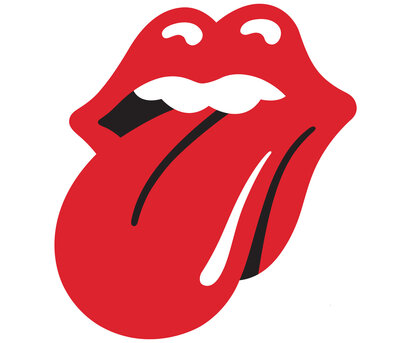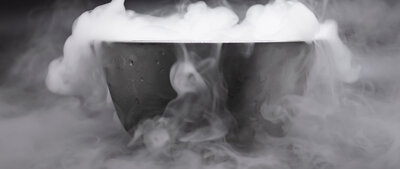…AND THE HUMBLE CARBON DIOXIDE MONITOR
We know that the humble carbon dioxide monitor is not the most exciting or sexiest thing in the world, but we take pride in our gas monitoring solutions here at Analox and are happiest when people are kept safe from potentially fatal gas leaks.
With this in mind, we present a list of fun facts about carbon dioxide which we hope will intrigue you!
1. CARBON DIOXIDE IS KNOWN DIFFERENTLY DEPENDING ON WHERE IN THE WORLD YOU ARE
For example, it is known as ‘koldioxid’ in Sweden, ‘二氧化碳’ in Chinese and ‘süsinikdioksiid’ in Estonian. In Dutch, it is known simply as… carbon dioxide.

2. CARBON DIOXIDE EXISTS NATURALLY IN THE ATMOSPHERE
Carbon dioxide is present in the air we breathe every day, although concentrations are so minuscule (around 0.04%), monitoring is not needed everywhere. However, it is imperative to measure levels of carbon dioxide in an industrial environment, especially in confined spaces as levels can quickly increase, without the correct ventilation.
3. CARBON DIOXIDE LEVELS RISE IN CROWDED ROOMS
We breathe in oxygen and breathe out carbon dioxide, which means that carbon dioxide levels in a room can rise over the course of the day. When we’ve attended exhibitions in the past, we’ve monitored levels of carbon dioxide for this very reason!
Although the rise in carbon dioxide will not put you in danger, it could make you feel more tired and lethargic. The best thing to do is to keep the room ventilated with plenty of fresh air.

4. CARBON DIOXIDE HAS NO TASTE, COLOUR OR SMELL
Carbon dioxide cannot be seen, tasted and has no odour, which makes it hard to know when levels of it increase. This is why monitoring it is so important.

5. CARBON DIOXIDE CAN BE USED TO INCREASE GROWTH OF FLOWERS, FRUIT AND VEGETABLES
Plants use sunlight, carbon dioxide and water to generate food in a process called photosynthesis. Greenhouse owners often increase the amount of carbon dioxide in the atmosphere in order to promote growth, although this is a balancing act as if carbon dioxide levels are too high, it can damage the crops.
We’ve developed carbon dioxide monitors which can automatically shut down the carbon dioxide supply to the greenhouse, if levels rise beyond an acceptable standard.

6. CARBON DIOXIDE AND CARBON MONOXIDE ARE TWO VERY DIFFERENT THINGS
We’ve noticed some people get carbon dioxide and carbon monoxide confused; if you do a search for ‘carbon dioxide monitor’ a lot of the top results are for carbon monoxide, which is worrying.
Although both of these gases have no taste or smell, carbon dioxide occurs naturally in the atmosphere, whilst carbon monoxide does not. Carbon dioxide that comes from a gas cylinder is denser than air and gathers nearer the ground as it leaks, whilst carbon monoxide has a similar density to air .
Carbon Dioxide vs Carbon Monoxide – Do you know the difference?

7. DRY ICE IS MADE OF CARBON DIOXIDE
Dry ice, which is used in refrigeration, special effects and cleaning, is made of solid carbon dioxide. This means it must be treated in the same way as carbon dioxide gas and not used in confined spaces.

8. CARBON DIOXIDE IS USED TO DISPENSE BEER
If you go to a pub or a bar, chances are that they do have a carbon dioxide monitor in the back of the facility or in their cellar (or they should have). This is because carbon dioxide (or ‘dispense gas’ as it is commonly known in the beverage industry) is used to add the bubbles to beer as well as push it from the keg to your glass.

9. CARBON DIOXIDE CAN BE USED TO KEEP HOME FURNISHINGS CLEAN
Did you know an American University has conducted research where carbon dioxide vapour is used to freeze home furnishings? This process removes allergy-causing substances and kills dust mites, reducing asthma symptoms.

10. CARBON DIOXIDE CAN BE USED TO PUT OUT FIRES
Carbon dioxide is used in some fire extinguishers. It works by removing the oxygen that the fire needs to burn, plus it is cheap and widely available.
However, it can be dangerous if used in an enclosed spaces as the amount of carbon dioxide that is used to remove the oxygen is high enough to become poisonous and could cause harm to life.

CO2 Calculator
There is a common misconception that if using carbon dioxide (CO2) in your facility you can stay safe by using an oxygen (O2) monitor.
The team here at Analox want to dispel this myth so we can ensure you and your team stay safe when using and storing CO2.
CO2 is a toxic gas meaning that even at relatively low levels it can have dangerous effects on the human body. In the event of a CO2 leak, the CO2 will begin to displace the O2 in the area, however, O2 sensors typically have alarm levels set at around 19.5% and 18% so by the time the CO2 has displaced enough oxygen to trigger these alarm levels the CO2 levels will be dangerously high.
If using CO2, your safety monitor must be a CO2 monitor, this is critical so you are alerted to any leaks at levels which still give you time to take action to keep everyone safe. This also helps to save you money as leaks can be addressed early and in the current times of CO2 shortages, protecting this precious resource is key to any business.
We’ve made this calculator so you can check the resultant O2 levels when the ambient CO2 level changes.
SLOT Specified level of toxicity (1 - 5% of fatalities) SLOD Significant likelihood of death (50% fatalities)
Remember: You CANNOT use an O2 sensor to measure CO2 levels. CO2 levels become hazardous to life long before the CO2 displaces enough O2 for it to trigger an O2 alarm.
We hope that you learned something new today! If you want to know more about our range of carbon dioxide monitors, contact our friendly sales team today and we’ll be happy to help.
